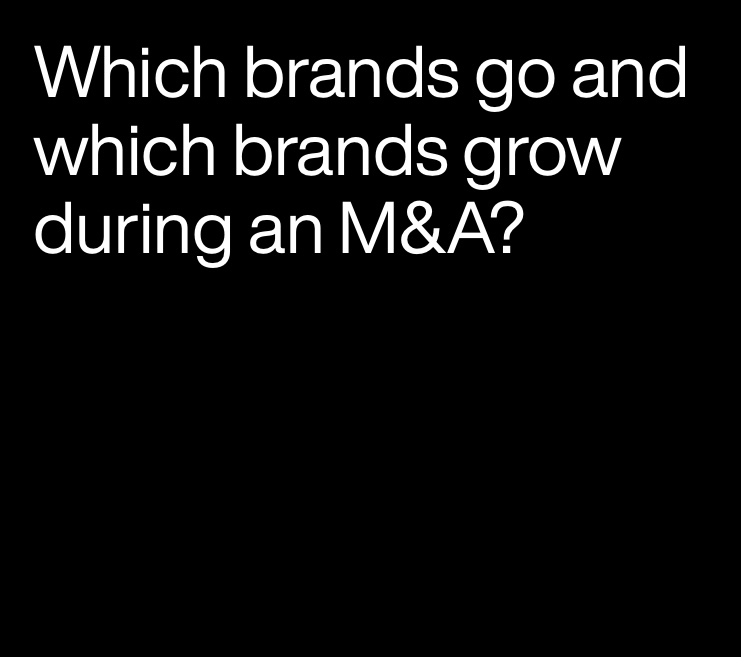By Zion Rufus
After a slowdown in Mergers and Acquisitions (M&A) activity towards the end of 2022, experts are anticipating a significant uptick in M&A endeavors during the second quarter of this year. As economies continue to evolve, brands are positioning themselves to seize emerging opportunities. However, despite the promise of growth, the sobering reality remains that mergers and acquisitions carry a failure rate ranging from 70% to 90%.
M&A activity, a strategic avenue pursued by successful global brands, is poised for resurgence following last year’s economic uncertainties due to factors such as inflation and geopolitical concerns. With this renewed vigor, brands are navigating uncharted territory, where risk and reward interplay with every calculated step.
Over the decades, Interbrand, a global leader in brand consulting, has participated in numerous M&A activities spanning diverse industries, including banking, fashion, healthcare, aviation, technology, and more. The organization has been instrumental in mergers, acquisitions, spinoffs, valuations, and consolidation endeavors. Recent notable projects encompass the spinoff of GSK’s newly named Haleon brand, GE’s creation of spinoffs like GE HealthCare, GE Vernova, and GE Aerospace, and the banking merger that brought forth the new brand Truist.
Undoubtedly, the amalgamation of brands during a merger or acquisition marks a critical juncture, where both business and brand evolution demand meticulous precision. The strategic handling of portfolios, particularly within organizations boasting a spectrum of brands, necessitates dedicated thought and consideration. The future success of such endeavors hinges on prudent decisions about brand retention, roles, and integration.
Numerous factors underpin these critical decisions, extending beyond the realm of business considerations to encompass legal, logistical, and market dynamics. Evaluating individual brands and their interrelationships is pivotal. This evaluative process also delves into the legal landscape to anticipate potential roadblocks before substantial resources are expended.
Key considerations for decision-making entail:
Legal parameters
Legal limitations on brand usage are pivotal. Understanding geographic and temporal restrictions on brand names is crucial.
Customer familiarity
The level of customer recognition attached to each brand is a key indicator, guiding discussions on the brand’s future role.
Market standing
Current market positions of the brands provide valuable insight into their potential to drive business growth.
Market potential
Projecting market share for each brand, individually and collectively, guides strategic planning for the business’s future trajectory.
Rebranding costs
Recasting brands post-merger can incur significant expenses, which must be weighed against potential returns.
Geographic reach
Evaluating a brand’s global reach and adaptability to various cultures and markets is essential for resource allocation.
Equity assessment
Understanding each brand’s perceived value among audiences informs strategic alignment with future business aspirations.
Audience alignment
Identifying crucial audience segments aids in determining how well a brand resonates with desired target groups.
Category suitability
When merging diverse product or service categories, assessing a brand’s potential to extend across new domains is vital.
This systematic evaluation process culminates in a decision-making model that reflects the unique dynamics of each situation. Flexibility and adaptability are essential, as internal considerations and risks may necessitate additional checkpoints.
In a landscape where knowledge wields immense power, relying on instinct alone during M&A activities can lead to unforeseen pitfalls down the road. Instead, harnessing the strength of smart analytics, research, and data-driven insights will provide a firm foundation for growth during these transformational periods.
(*Sources: Harvard Business Review, Interbrand, Forbes)







Comment
No comments found.